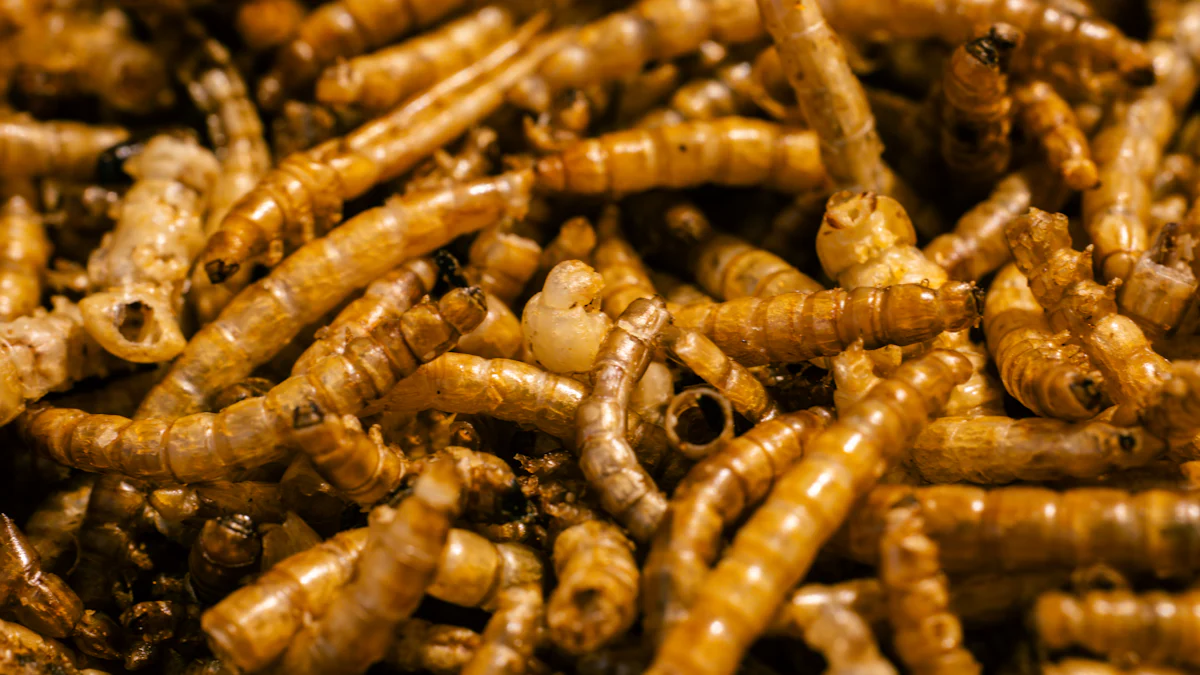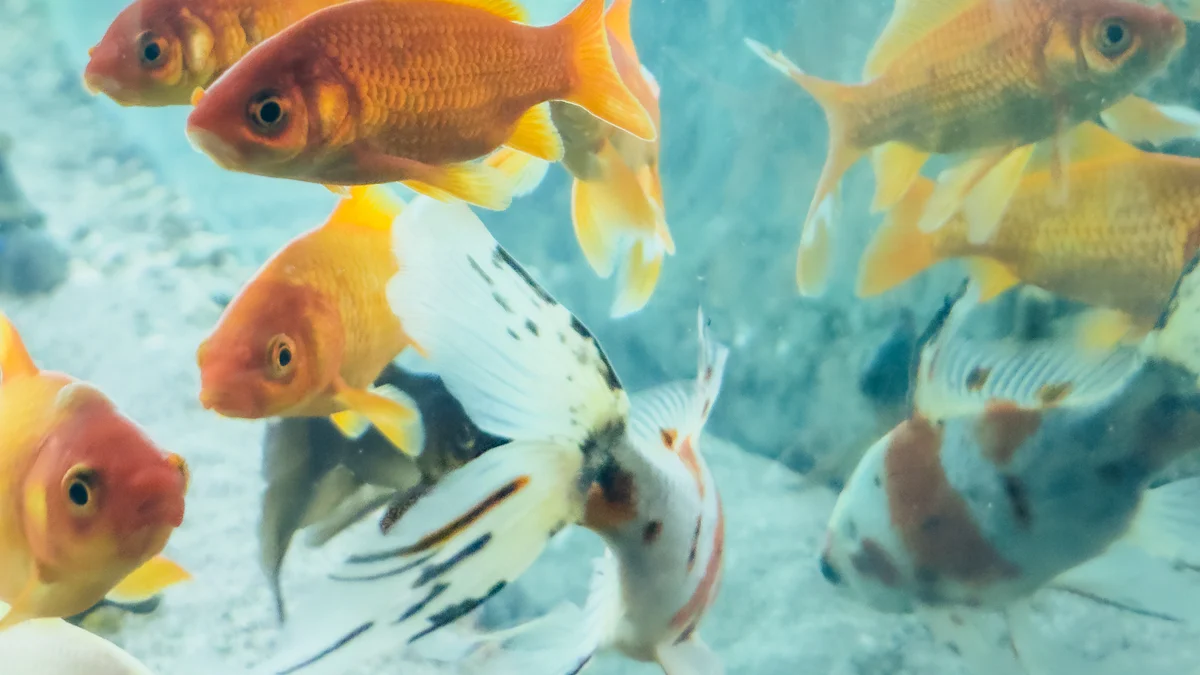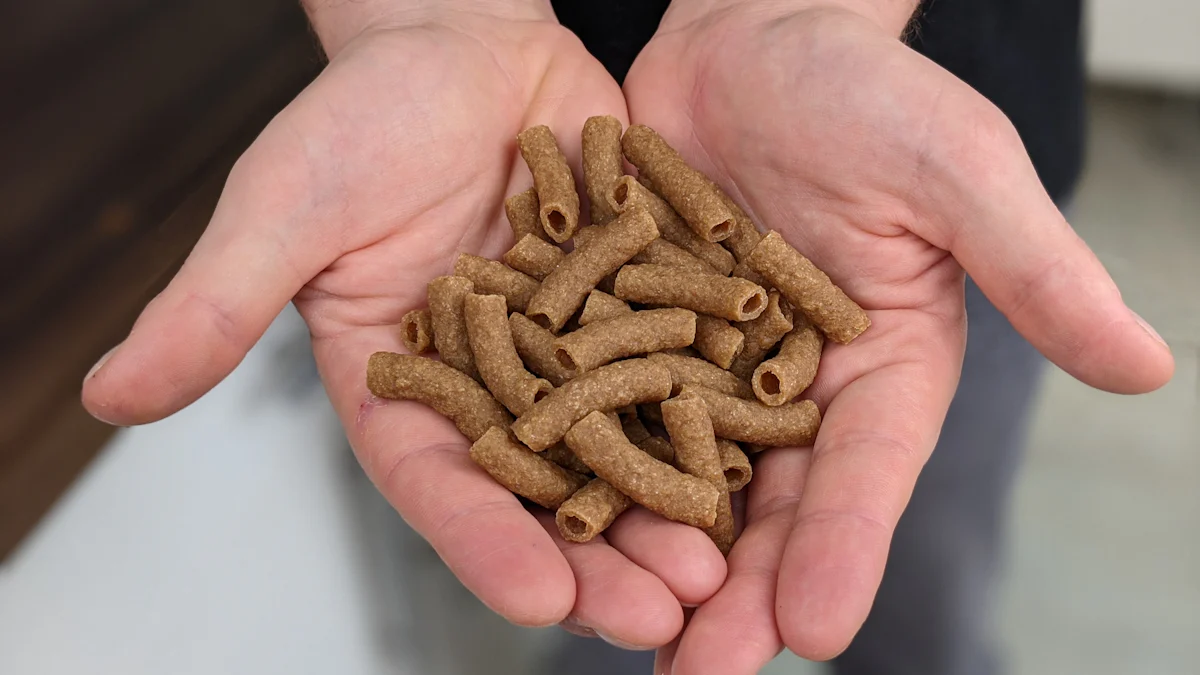
Mealworms for tropical fish offer a natural and protein-packed treat that supports their health. These insects mimic the diet of wild fish, making them an excellent choice for carnivorous or omnivorous species. Packed with protein, healthy fats, and amino acids, mealworms promote muscle growth, energy, and vibrant colors in fish, enhancing their overall vitality.
Key Takeaways
- Mealworms are a healthy snack for tropical fish. They give protein and fats that help fish grow and stay active.
- Add mealworms slowly to your fish’s meals. This helps avoid stomach problems. Watch how your fish react to the new food.
- Give mealworms only once or twice a week. Mix with other foods to keep fish healthy and avoid weight gain.
Are Mealworms for Tropical Fish a Good Choice?
Nutritional Benefits of Mealworms
Mealworms are a powerhouse of nutrients, making them an excellent addition to a tropical fish’s diet. These insects are rich in protein, which is essential for muscle growth and tissue repair. When dried, mealworms contain an impressive 53% protein, which is comparable to chicken and even higher than beef. This high protein content supports the growth and vitality of tropical fish, especially carnivorous and omnivorous species.
In addition to protein, mealworms provide healthy fats that give fish the energy they need to stay active. They also contain essential vitamins and minerals like magnesium, phosphorus, and zinc, which contribute to overall health. For fish that thrive on insect-based diets, mealworms can enhance their natural colors and boost their energy levels.
Tip: Including mealworms in a fish’s diet can mimic the natural feeding habits of wild fish, promoting better health and behavior.
Types of Mealworms: Live, Dried, or Frozen
Mealworms for tropical fish come in three main forms: live, dried, and frozen. Each type has its own benefits:
- Live Mealworms: These are high in moisture (62%) and contain 20% protein. They encourage natural hunting behaviors in fish, making feeding time more engaging.
- Dried Mealworms: With only 5% moisture, dried mealworms pack a punch with 53% protein and 28% fat. They are easy to store and handle.
- Frozen Mealworms: These retain much of their nutritional value and are a convenient option for fish owners who want to avoid handling live insects.
| Type | Moisture | Protein | Fat | Fiber |
|---|---|---|---|---|
| Live Mealworms | 62% | 20% | 13% | 2% |
| Dried Mealworms | 5% | 53% | 28% | 6% |
Choosing the right type depends on the fish species and the owner’s preferences. For example, live mealworms are ideal for fish that enjoy chasing their food, while dried mealworms are perfect for convenience.
Which Tropical Fish Benefit Most from Mealworms?
Many tropical fish species thrive on a diet that includes mealworms. Carnivorous and omnivorous fish, in particular, benefit the most. Species like cichlids, goldfish, and guppies enjoy mealworms as part of their diet. These fish naturally consume insects in the wild, so mealworms provide a familiar and nutritious food source.
| Species | Diet Preference |
|---|---|
| Cichlids | Omnivorous |
| Goldfish | Omnivorous |
| Guppies | Omnivorous |
Mealworms not only meet their dietary needs but also encourage natural feeding behaviors. Adding mealworms to their diet can help these fish grow stronger, stay more active, and display vibrant colors.
Preparing and Feeding Mealworms to Tropical Fish

How to Prepare Mealworms for Feeding
Proper preparation ensures mealworms are safe and digestible for tropical fish. Freshly molted mealworms are softer and easier for fish to eat, making them a great choice. For smaller fish, cutting mealworms into bite-sized pieces helps them manage the food better. Soaking dried mealworms in water softens them, improving digestion and making them more palatable.
Gut-loading mealworms before feeding is another excellent practice. This involves feeding the mealworms nutrient-rich foods, like fruits or vegetables, to boost their nutritional value. Offering mealworms as a single insect source or alongside other foods can provide variety and balance in the fish’s diet.
Tip: Always rinse mealworms before feeding to remove any debris or contaminants.
Feeding Guidelines: Portion Sizes and Frequency
Portion sizes depend on the size of the fish. Larger species, like cichlids, can handle whole mealworms, while smaller fish need them cut into manageable pieces. For dried mealworms, soaking them beforehand ensures they’re easier to digest.
Mealworms for tropical fish should be offered as an occasional treat, not a staple. Feeding them once or twice a week is ideal. This frequency prevents overfeeding, which can lead to obesity or digestive issues. Start with small portions and adjust based on the fish’s appetite and size.
Note: Avoid feeding mealworms exclusively. A varied diet is essential for balanced nutrition.
Tips for Introducing Mealworms to Your Fish’s Diet
Introducing mealworms gradually helps fish adapt without stress. Start by offering small pieces alongside their regular food. Monitor their behavior and adjust the amount as they become accustomed to the new treat.
For smaller fish, cutting mealworms or soaking dried ones makes them easier to eat. Always control portions to prevent overfeeding. Mealworms should complement the fish’s diet, not replace it.
Reminder: Watch for any signs of digestive upset, like reduced activity or bloating, and adjust feeding practices if needed.
Risks and Limitations of Mealworms for Tropical Fish

Digestive Challenges with Mealworms
Mealworms can be a nutritious treat, but they aren’t always easy for tropical fish to digest. Their exoskeleton contains chitin, a tough substance that some fish struggle to break down. Dried mealworms, in particular, pose a challenge due to their low moisture content and harder texture. Freshly molted mealworms, which have recently shed their exoskeleton, are softer and much easier for fish to digest.
To make mealworms more digestible, consider soaking dried ones in water before feeding. This softens them and reduces the risk of digestive issues. For smaller fish, cutting mealworms into bite-sized pieces can also help. Proper preparation ensures your fish can enjoy the benefits of mealworms without unnecessary strain on their digestive system.
Risks of Overfeeding Mealworms
Overfeeding mealworms to tropical fish can lead to several health problems. These insects are high in fat, which can cause obesity if consumed in excess. Fish with firm, full bellies are healthy, but a bulging belly is a clear sign of overfeeding. Too many mealworms can also upset their digestive system, leading to discomfort or bloating.
Another risk of overfeeding is nutritional imbalance. Mealworms alone cannot meet all the dietary needs of tropical fish. A diet overly reliant on them may lack essential nutrients, which can affect the fish’s overall health. To avoid these issues, feed mealworms sparingly—once or twice a week is usually enough.
Balancing Mealworms with Other Foods
Mealworms for tropical fish work best as part of a varied diet. Rotating them with other foods like flakes, pellets, or frozen options ensures your fish get all the nutrients they need. For mixed tanks, mealworms can be a great addition, but they should never replace a balanced diet.
To maintain variety, combine mealworms with commercial diets or other protein-rich foods. For smaller fish, cut mealworms into manageable pieces to make feeding easier. By offering a mix of food sources, you can keep your fish healthy, active, and vibrant.
Mealworms make a nutritious addition to a tropical fish’s diet. They provide high protein for growth and stimulate natural hunting instincts, keeping fish active and healthy.
- Live mealworms enhance coloration and promote well-being.
- Freshly molted ones are easier to digest.
- Feed them sparingly as a supplement to other foods.
Tip: A varied diet, including mealworms, helps fish thrive and resemble their wild counterparts.
FAQ
Can all tropical fish eat mealworms?
No, not all tropical fish can eat mealworms. Carnivorous and omnivorous species benefit most. Herbivorous fish may struggle to digest them.
How should mealworms be stored?
Store live mealworms in a cool, dry place. Keep dried mealworms in an airtight container. Frozen mealworms should stay in the freezer until use.
Are mealworms safe for small fish?
Yes, but preparation is key. Cut mealworms into small pieces or soak dried ones to make them easier for small fish to eat and digest.


